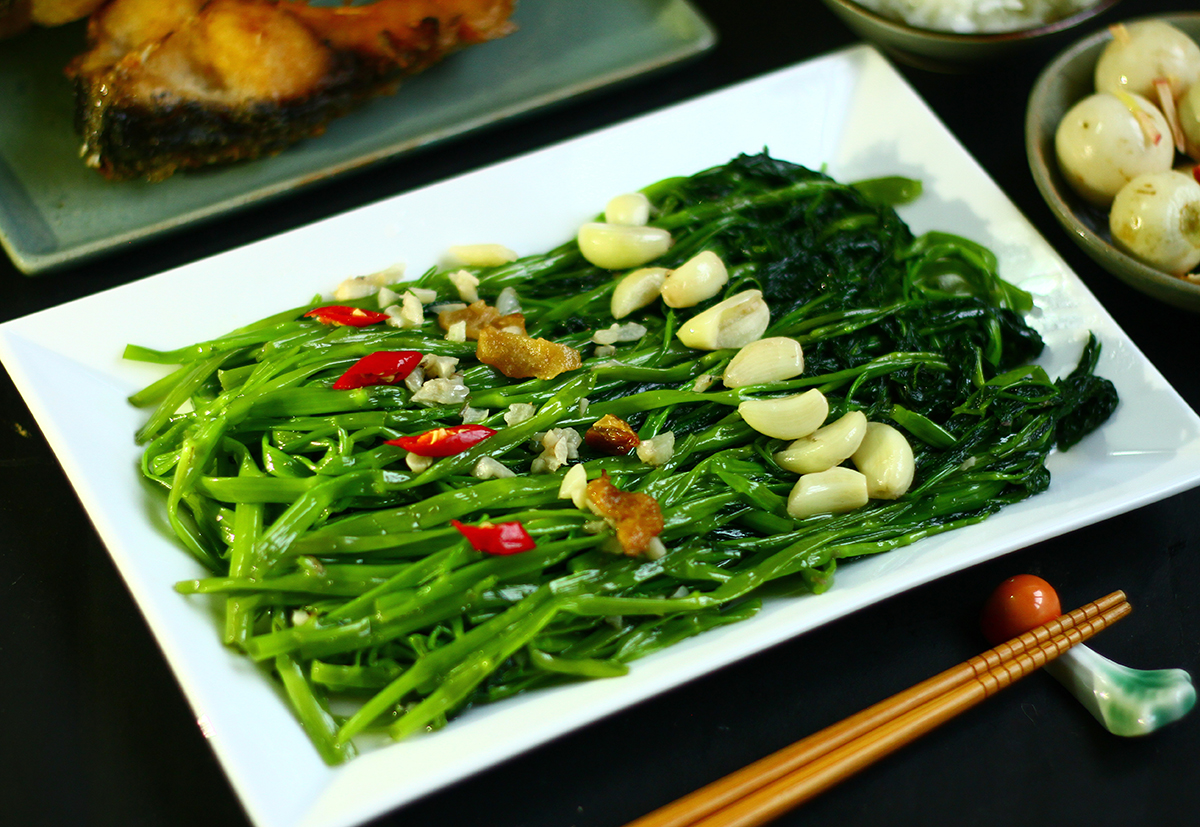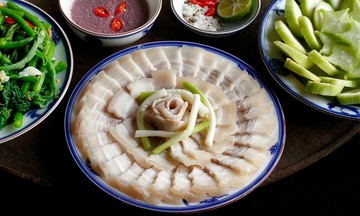The traditional method of adding garlic to hot oil infuses the oil with a fragrant base that permeates the vegetables as they cook. This familiar aroma evokes the comfort of home-cooked meals. However, high heat can easily burn the garlic, creating a bitter taste and browning the vegetables. Experienced cooks carefully monitor the garlic, adding the vegetables as soon as it turns golden.
Adding garlic towards the end of cooking preserves its pungent aroma and crisp texture. The vegetables retain their vibrant green color, contrasted by white or light yellow garlic slices, creating a visually appealing dish. This modern approach, favored by many chefs, prioritizes aesthetics and the natural sweetness of the vegetables.
 |
Stir-fried morning glory with garlic. Photo: Bui Thuy |
Stir-fried morning glory with garlic. Photo: Bui Thuy
From a scientific perspective, garlic contains sulfur compounds, notably allicin, formed when cloves are crushed or minced. Allicin gives garlic its pungent flavor and antibacterial properties. However, high heat easily degrades this compound. Adding garlic early converts most of the allicin into milder sulfur compounds, creating the familiar fried garlic aroma. Adding it later preserves more allicin, potentially benefiting heart health and boosting immunity.
Like garlic, many spices (ginger, lemongrass, galangal, cinnamon, star anise, cardamom) dissolve better in fat or alcohol than in water. This is why oil, fatty meat, or a splash of cooking wine enhances their aroma. This seemingly small step of sauteing spices is key to creating flavorful stir-fries and braises.
Beyond flavor, the color of the vegetables is also affected. Brief exposure to high heat ruptures the cell membranes, releasing gases and intensifying the green color. However, prolonged cooking, especially when organic acids are released, can cause the color to turn a dull, unappetizing olive green. If the garlic is fried for too long, the intense heat will quickly wilt the vegetables, releasing acids and degrading their color. Conversely, quickly stir-frying the vegetables until almost cooked before adding garlic preserves their bright green hue while still infusing them with flavor.
Nutritionally, preserving allicin by adding garlic later offers greater health benefits. Studies suggest allicin may help lower cholesterol and has antibacterial properties. However, the pungent aroma of raw garlic can be harsh for sensitive stomachs. In such cases, frying the garlic first is a safer and more palatable option.
To achieve a balance, many cooks divide the garlic: one portion is fried to create a fragrant base, while the other is added later to retain freshness and allicin. This method combines the characteristic aroma with vibrant color and balanced health benefits. Some restaurants further enhance the dish by sprinkling crispy fried garlic on top before serving, creating a contrast in textures and colors.
Bui Thuy












